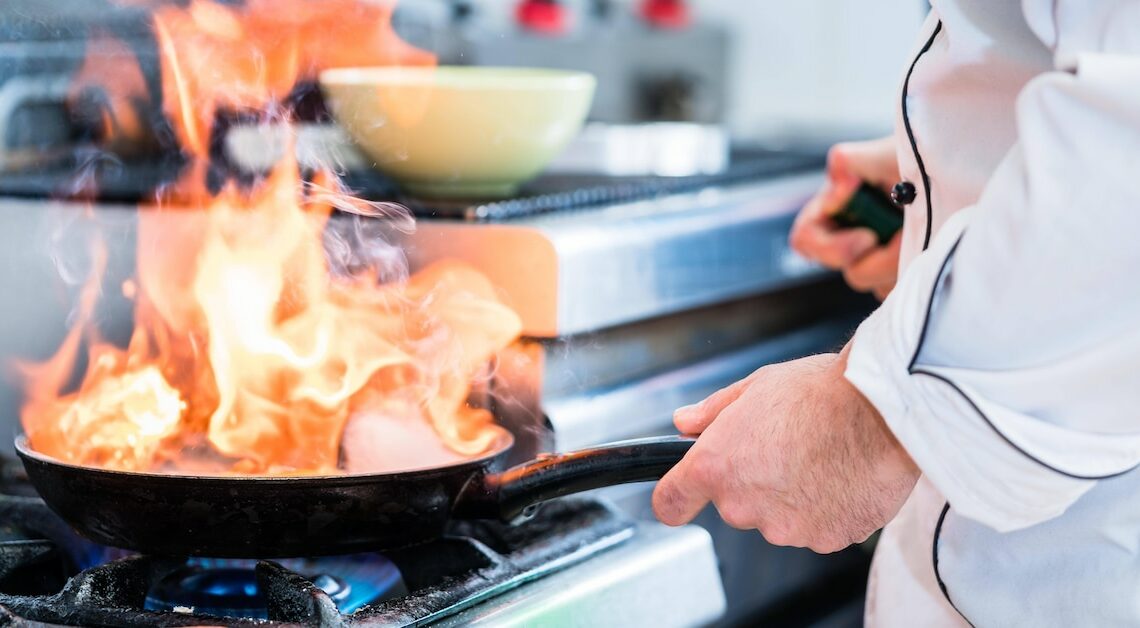
What flambéing means can be seen in the flame that emanates from a dish prepared in this way. Alcohol is used.
Flambéing: This is what lies behind the preparation method
If you're going out for a fancy meal with friends or family, there's hardly anything more spectacular than when chefs set your food on fire. In the case of flambéing, this doesn't mean that you have to eat burnt food. This method of preparation is popular both for its taste and for the show effect.
- The originally French word flambé, derived from “flamber”, means something like “to burn”.
- Experienced chefs add high-proof alcohol to a dish that they are preparing in a pan, which they then let burn off with a typical blue flame.
- A slight alcoholic aroma remains, although most of the alcohol will have burned off by the time the food is served. As soon as there is no more alcohol, the flame goes out.
- Virtually any food can be flambéed – from the classic Crêpe Suzette with orange liqueur to pan-fried dishes and even prawns. Feuerzangenbowle can also be flambéed.
What you should keep in mind when flambéing
If you want to try flambéing, you should be aware that this method of preparation is not without its risks. After all, being too close to a large flame and hot fire can have serious consequences.
- If you want to flambé a dish in front of an audience, you will need warm alcohol with at least 40 percent alcohol, such as cognac or fruit brandy, according to the Federal Center for Nutrition. You should not use more than one or two shot glasses for this, both for taste and safety reasons.
- In addition to the alcohol, the food to be flambéed must also be warm, but not boiling hot.
- If you want to light the flame in the pan, you should keep a certain safety distance. This is particularly easy to do if you light it with a stick lighter or long matches.
- You may also be able to light the flame on a ladle and then transfer it to the dish.
- Not only should you and your guests' bodies be kept at a certain distance from the flambéed food. Flammable decorations or other household items that could quickly catch fire should also not be placed near the flambéed food.
- Also, do not flambé under an extractor hood, where the layer of grease in the filter can catch fire, or on a gas stove. Never flambé under an extractor hood – the layer of grease in the filter catches fire extremely quickly. If you are using a gas stove, you should definitely remove the pan from the stove before flambéing. Do not blow out or smother the flame, but let it burn out in peace.
- You can also flambé without alcohol – and it's much safer: with a kitchen burner or Bunsen burner, which is often used for crème brûlée, for example.
